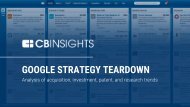mit_impact_full_report
mit_impact_full_report
mit_impact_full_report
You also want an ePaper? Increase the reach of your titles
YUMPU automatically turns print PDFs into web optimized ePapers that Google loves.
Table 16<br />
Primary Universities Doing Startup<br />
Licensing, 2006*<br />
University Startups Licensed<br />
U. California system 39<br />
MIT 23<br />
U. Utah 17<br />
Purdue 14<br />
SUNY 12<br />
U. Colorado 10<br />
U. Florida 10<br />
U. Washington 10<br />
* Compiled by the authors from AUTM data<br />
formation. Thus, the numbers cited here and in our<br />
alumni figures again inevitably understate overall<br />
entrepreneurial <strong>impact</strong> of MIT technology<br />
Sometimes the time required for such early-stage<br />
licensed technology to have economic <strong>impact</strong> is quite<br />
long. For example, Cubist Pharmaceuticals was<br />
founded by two MIT faculty members with an MIT<br />
license in 1992. After long struggles, the company<br />
finally has advanced to the point that it is anticipating<br />
$500 million in 2009 revenues, a long haul to<br />
success<strong>full</strong>y bring new science to the marketplace.<br />
Beyond their formal roles, the TLO staff members,<br />
An Evolving MIT Internal Entrepreneurial Ecosystem<br />
due to their organizational location and personal<br />
expertise, also actively contribute in their “spare” time<br />
to MIT classes and student activities. These include<br />
participation in sponsorship and judging of the $100K<br />
Business Plan Competition, active involvement with<br />
the MIT Enterprise Forum, and guest lectures on<br />
patents and licensing in a number of courses, both<br />
undergraduate and graduate, and clubs.<br />
Even prior to the Venture Mentoring Service (to<br />
be discussed later), which it now also helps, the TLO<br />
provided “open-door coaching” for any student<br />
thinking of starting a business, whether through an<br />
MIT license or not. Several dozen students per year<br />
participate. That coaching now includes having TLO<br />
staff take on roles as project advisors and I-Team<br />
Catalysts for the Deshpande Center. All of these<br />
endeavors tie the knowledge and connections of the<br />
TLO to the rest of MIT’s internal efforts at stimulating<br />
and aiding entrepreneurship. Note in Table 17 the<br />
increasing evidence over time of visibility and<br />
perceived <strong>impact</strong> of the TLO on venture formation,<br />
despite the fact that only a very small fraction of the<br />
alumni entrepreneurs surveyed in 2003 employed<br />
MIT-licensed technology in their new enterprises.<br />
Case Example: A123 Systems<br />
No doubt at least one interesting story can be<br />
told for each startup the TLO licenses. A most recent<br />
one6 illustrates primarily the formal role of the TLO<br />
in helping new companies to be created and MIT<br />
technology to go to market. It also again illustrates<br />
Table 17<br />
Technology Licensing Office Importance to Venture Founding (from li<strong>mit</strong>ed sample only)<br />
Proportion Rating University Factors as Important in Venture Founding* (percentage)<br />
Graduation Decade 1950s 1960s 1970s 1980s 1990s<br />
(N=73) (N=111) (N=147) (N=144) (N=145)<br />
Technology Licensing Office 1% 0% 2% 4% 11%<br />
*Respondents could check all relevant categories<br />
6. The A123 Story: How a Battery Company Jumpstarted its Business, www.xconomy.com/2008/01/24/ the-a123-story-how-a-battery-companyjumpstarted-its-business/.<br />
ENTREPRENEURIAL IMPACT: THE ROLE OF MIT 59



